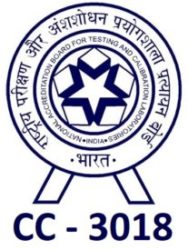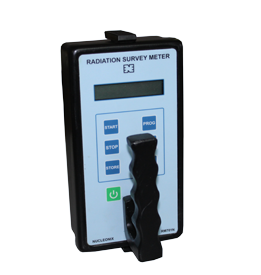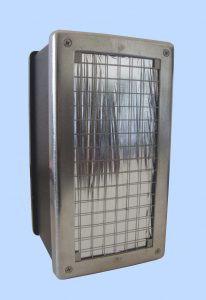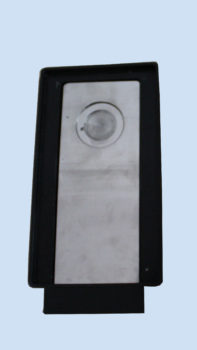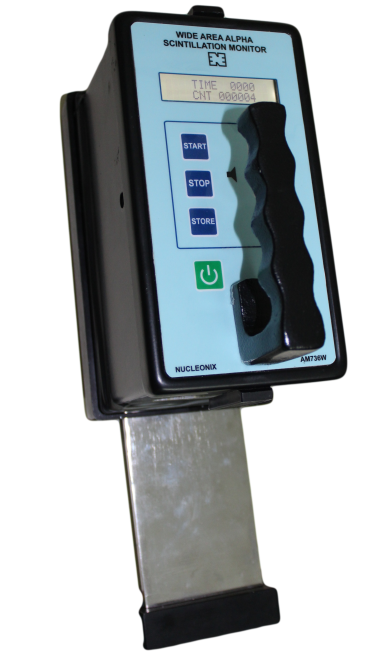Wide Area Beta Contamination Monitor Cum Swipe Counter * [ TYPE : WCM 719]
Technical Data

“Wide Area Beta Contamination Monitor Cum Swipe Counter” Type WCM719 manufactured and supplied by Nucleonix Systems, serves as a contamination monitor cum swipe counter. It uses a plastic scintillator coupled to PMT as the detector for Beta. It is a hand held device primarily used for simultaneous checking of β / γ contamination on floor, work benches, walls etc. in active labs. It is a microcontroller based unit designed to indicate contamination in CPS or CPM or counts for a ‘preset time’ to indicate on LCD display. It has large sensitive area of about 100 Sq.cm. It operates using Li-ion rechargeable batteries or Dry cells. Well designed ‘handle’ for holding the unit has been provided. Optionally, a drawer assembly for counting of wipe samples and air activity samples is provided.
Features
Specifications
| Radiation Detected | Beta / Gamma. |
|---|---|
| Detector | Plastic scintillator screen covered with aluminized mylar(serves as entrance window) coupled to suitable PMT with a suitable light guide. User can easily replace Mylar, when contaminated or damaged. No screws are used, and only latches to hold the scintillator frame. |
| Detector Viewing Area | 100 sq cm scintillator (8×12.5cm) with a sensitive area of more than 85%. Protection cover over detector window is provided for protection, when not in use. |
| Drawer assembly | This facilitates one to load samples both in planchets or on filter paper for counting application. |
| PMT | Suitable photo multiplier tube |
| Typical Operating Voltage Range | 750 – 900V. |
| Alarm Threshold: | It will have provision of individual alarm threshold for β / γ. |
| Overall Efficiency: | Better than 20% with Sr 90 / Y 90 Beta Source. |
| Preset Time | (1-9999) Sec. |
| Counts Capacity | 999999. |
| Over Range | Indication is provided. |
| Built-in Storage | 1000 readings can be stored and recalled onto display. |
| User Interface : | START, STOP, PROG, STORE, INC, DEC & ON/OFF are the seven control buttons provided on the instrument. The above buttons allow user to program and operate the instruments in appropriate manner |
| USB | PC connectivity through USB port for dumping data. |
| RTC | Real time clock for time stamp of each data. |
| Display | 16×2, dot matrix LCD display. |
| HV | HV adjustable internally 750V-900V (Factory Set) depending on the PMT used. |
| Measurement Units: | Bq, Bq/m3, CPS, DPM. Counts mode will have provision for calibration factor settings within a list of isotopes in different measurement units. |
| Alarm: | Acoustic alarms for alarm thresholds for Beta, Gamma, chirps are produced for Beta and Gamma counts. |
| Power: | Operable on standard dry cells (1.5V X 4) 6 volts DC, Size AA, LR6, Alkaline cells BPL Excell or its equivalent or Rechargeable NiMH (1.2Vx5) 6VDC, size AA, LR6 or Battery eliminator. |
| Dimensions: | Less than 115x230x115mm. |
| Weight: | <1.5kg. |
| Operating Storage Temperature: | 0 to 50 |
| Modes of Operation: |
a) Scaler/Timer with preset count and preset time
for sample measurements. b) Rate meter mode for frisker operation. c) Gross or net counting. |
Applications : This serves as a wide area contamination monitor & is an ideal choice for checking of the contamination of larger surfaces with drawer attachment it is can be used to count swipe samples & also our activity samples.
How to Perform a Swipe Survey
Determining the existence of loose radiation contamination is essential in Nuclear Medicine Centers,
Radiological Facilities, active labs and other similar Facilities and also source housings/holders & tools
etc, used in industrial applications such as for oil & gas well logging. It is mandatory from the angle of
safety of the personnel working in these areas. Swipe surveys, also referred to as radiation swipe tests,
are the essential tools used to do so. Most swipes, depending on the application, are counted with the
appropriate radiation detector. These detectors can be typically a Digital Contamination Monitor which
Wide Area Contamination Monitor Cum Swipe Counter Type WCM719 with drawer assembly for
ease of use and portability when conducting these checks in the field or on the go. Swipe test has been
considered the most reliable method of determining external contamination on surfaces, source housings,
floorings and other work areas etc.
Taking Swipes
Be sure to start with the appropriate media (paper filters, cotton swabs, glass fiber filters, etc.) and take note
of the sampling areas you are testing for contamination. Swipes for use may be procured from the
concerned vendors in various sizes/ quantities as required. Typically, swipes should cover an area of about
100 cm square. Note that while performing a swipe of the area, user should take precautions to
avoid potentially contaminating themselves while collecting samples by using the appropriate protective
care, such as disposable gloves, face masks, etc., for the given scenario .
To take a swipe, the same amount of pressure you would use if cleaning up a spill with a wash cloth or a
sponge and pretend as if you are drawing an “S” over a portion of your sample area. Be sure to separate
and log the swipes to prevent cross contamination between the samples.
Counting Swipes
Once you have collected your swipe samples, you will need to establish your background levels so
that you can determine your baseline, or “zero”. This can be achieved by placing a clean swipe in the
sample counter, and taking a timed count. Be sure to use whichever counting protocol included in the
procedures for your laboratory to determine count times, the frequency of testing required,
acceptable thresholds, and the units of measurement required for reporting purposes. Some facilities
recommend using a control sample, which is a known check source with a specific activity. If your
reports require, readings in Becquerel (Bq) or disintegrations per minute (DPM) or Counts
per second (CPS), you may select mode of operation in your instrument accordingly.
Once your background has been recorded, you can easily identify potential contamination, as any
swipe test found to have a count rate greater than two times (2X) the count rate of the background
sample would be a potential source. Finally, record the contamination survey results on the
Radioactive Contamination Survey Record (RSS). Some results of wipe tests must be kept in a
Radiation Safety Manual. In those instances, records should include a laboratory map, the results
from the sample, and Wipe Test Calibration Work Sheets for establishing more accurate
contamination levels.
In the event that you have contamination, you should consult your Radiation Safety Officer on
procedures for decontamination.


